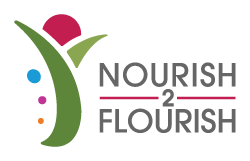How Well Do I Burn Fat?
I test myself periodically to see how efficient I am at burning fat. This also helps me to prepare my race day nutrition. I tested myself in May 2016 and again in November 2016 and didn't see much change. When I did Boulder Ironman this past June, I had planned to do another test before the race but my training schedule didn't really have a place for it, so I just used my old data. I'll be (finally) posting my race report shortly, which will show that I took in a little less than I had in past Ironman races, which isn't a whole lot. You can see my prior IM intake here. Boulder Ironman 2014 race report and Ironman WI 2015 race report. To prepare for this last IM I used my test results from last November, which show that my calorie need at the targeted race power and HR was about 22-33 carbohydrate calories per hour.
My ME test last November. I wasn't racing with power but was typically in the 125-135 HR on the bike.
I retested myself on 7-17-17. I did more of a race day simulation and had coffee with half and half as I would typically do before training. I was pleasantly surprised to see how much I had improved even after following my Fat Adapted Fueling plan for over 4 years. You can see below that my required carbohydrate calories decreased further (justifying my slightly lower intake in Boulder IM mid-June) and I was still burning more fat at higher power levels so my bike power has increased. I'm using power to race now and my target was between 140 and 150 watts for the full Ironman. Based on that, and my fat-burning efficiency, my required intake was approximately in the range of 12 and 35 carbohydrate calories per hour.
My carbohydrate calorie needs per hour, 10% is the minimum and 30% the maximum. Since I'm very efficient at burning fat, I can take in closer to 10%.
What I found even more interesting was how much higher my power and heart rates were before I crossed over into burning more carbohydrate than fat. The pictures below show my data from last November and this week (July 2017). I increased my crossover point from a heart rate of 135 to 146 and from 175 watts to 220 watts.
Crossover point in November 2016 was at heart rate of 135 and power of 175.
Crossover point in July 2017 was at heart rate of 146 and watts of 220.
The other great result is how quickly I returned to predominantly burning fat after crossing over. I reduced the power from 220 to 140 watts and was burning more fat than carbohydrate within about 30-45 seconds. That's important to know if you walk through aid stations or take recovery breaks in a longer race. Once I further reduced the power to 120, I was using fat for more than 90% of my calories. That's pretty darn good!
I will admit that I've allowed myself a little more flexibility in my intake during the last few months of my IM training because my intensity was higher for this training cycle. I felt I needed to add a bit more carbohydrates strategically around my key training sessions. I wondered how that would impact my fat burning but clearly there was no negative impact. I believe my long term application of my Fat Adapted Fueling program continues to pay off. Also, the test done last November was at beginning my training season and had just completed my off season so that likely impacted my fitness negatively.
Are you wondering how this affects the top end? I have done two sprint triathlons this year and was as fast as I have ever been, even two weeks post Ironman. I won my age group in both races. It felt good to go hard and empty the tank.
All this shows that long term, consistent dietary changes will continue to pay off. In addition, the longer one follows a program, the more it allows for occasional "splurges" while still progressing towards goals.




